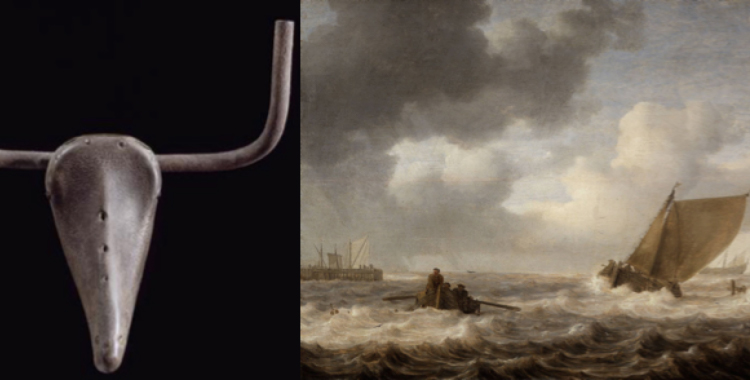
Art, Color, War
April 19, 2016
by Diana Greenwald | Filed in: Interdisciplinary
As mentioned in the previous post, the colors and materials an artist chooses to use can be closely linked to underlying economic forces. Sometimes, however, an artist is forced to use or forgo certain colors and materials because of broader social and economic change. In particular, war and trade embargos can affect artists as much as they do any other artisan or worker in a belligerent country. Cut off from the supply of certain pigments or materials, artists need to innovate or adapt to continue to produce artworks. The broader social, economic and political conditions can literally force artistic change.
This argument has been made to explain a trend in seventeenth-century art, from the Dutch Golden Age. In “Adjusting to Hard Times: Dutch art during its period of crisis and restructuring (c. 1621 – c .1645)” (Art History 30.2, 1997), Jonathan I. Israel argues that art in the Netherlands became smaller, cheaper and more subdued during the Thirty Years’ War. In particular, he cites a move among lowland artists during this period experienced a “pronounced shift to muted coloring and the avoidance of vivid pigments [previously] characteristic of most (if not all) Dutch art.” (p. 458). Scholars agree that Dutch paintings were in a “monochrome” phase during these decades. An example of this period is Jan Porcellis’ grey-heavy An Estuary in Stormy Weather (c. 1630) in Rotterdam’s Boijman’s Collection; it is shown on the right side of the featured image for this post.
This move to more somber colors could be, in part, psychological. It may have been provoked by the emotional responses of artists and patrons to the trauma and tragedy of war and war-induced recession. However, a more concrete reason could be that war cut off trade routes that connected artists to brightly colored pigments. Israel writes, “For more vivid blues and deep greens, Dutch Golden Age artists relied on imports of azurite, Spanish ash, indigo and…costly ultramarine, extracted from lapis lazuli” (p. 465). Spain was a belligerent in the Thirty Years’ War, and commercial ties between the Spanish and the Dutch were severed in 1621. Indigo came from Spanish Central America, and replacement indigo needed to travel from India to the Netherlands. Other sources of blue pigment had to arrive via Central Europe, which was a war zone during this period. Vibrant blues were suddenly prohibitively expensive or simply not available. These limits seem to have forced stylistic innovation among Golden Age artists.
The limits imposed by war continued to affect artists well into the twentieth century. In “Picasso Sculpture”—a recent retrospective at New York’s Museum of Modern Art—a gallery was dedicated to Picasso’s output during his time in Nazi-occupied Paris. The occupiers severely limited his movements and professional activity, and the artist was forced to transform his bathroom into a makeshift sculpture studio. In this small space, he cast and re-cast sculptures in bronze. Because of metal shortages, casting in bronze was officially prohibited. However, he was able to create evocative images with very limited materials and limited space.
Perhaps more impressive and important than his work in bathroom bronze, was Picasso’s creation of iconic sculptures from found materials. His Tête de taureau (Bull’s Head) from 1942—pictured on the left of the featured image—is one of his most famous sculptures. It is simply made by joining a scavenged set of handlebars to a bicycle seat. The use of found common objects and the need to innovate with a limited supply of materials is likely a product of Picasso’s wartime privation. Economic constraint created the conditions for this artistic genius to produce one of his most iconic works.
The Economics of Color, Part 2 >>
<< The Economics of Color, Part 1
